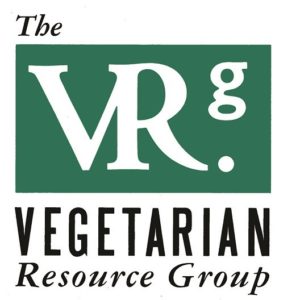The Environmental Impacts of Food Products
By Reed Mangels, PhD, RD
Picture yourself at a well-stocked supermarket. You are reading package labels to try to assess which foods are healthiest for you. “What about foods that are best for the environment?” you may wonder. In the past, The Vegetarian Resource Group has reported about studies finding that producing a single serving of red or processed meat has a markedly larger impact on greenhouse gas emissions, land use, acidification, and air quality than does producing a serving of plant foods (1, 2). While helpful, these studies don’t aid with making decisions about specific food products.
New research, using more than 57,000 products from the United Kingdom and Ireland, estimated products’ impacts on greenhouse gas emissions, land use, water stress, and eutrophication potential (3). Each food’s nutritional quality was also considered. Generally speaking, more nutritious foods were more environmentally sustainable. If the different aisles in a grocery store were considered, the aisles with fruits, vegetables, salads, breakfast cereals, some breads, and meat alternatives (e.g. tofu, vegan sausages) were judged to have the best scores for environmental impact and nutritional quality. Aisles with cheese, chocolate, savory pies, and quiches scored worst for environmental impact and nutritional quality. The aisles with the greatest environmental impact generally were ones with beef and lamb products. Some products such as sodas, fruit juice, and frozen desserts had low environmental impact scores but were deemed to be of poor nutritional quality.
In the U.K., package labels indicate the actual amount of ingredients, saying something like pesto is 47% by weight basil and 5% cashews. This information, which was used in this research to estimate the environmental impact of products containing a number of ingredients, is not included on labels in the U.S. This study used a serving size of 3 ounces of product for all foods. This may over-estimate the actual amount consumers eat of some foods (like nuts) and under-estimate the amount of others (like prepared entrées). The estimated environmental impact includes the processing and transportation to retail stores of raw ingredients but does not include postproduction processing, packaging, and transportation. So, for example, the environmental impact of making sugar into soda or of making flour into bread was not calculated. Despite these limitations, this study offers help to consumers making decisions about which food to purchase.
To reduce the environmental impact of their food choices, consumers can reduce or eliminate foods like beef, lamb, and cheese and products containing these foods. These can be replaced by similar plant-based products which have a lower environmental impact.
We hope that additional studies like this one will be conducted in the United States and other countries and that package labels of food products will include information about their environmental impact.
References
- Domingo NGG, Balasubramanian S, Thakrar SK, et al. Air quality-related health damages of food. Proc Natl Acad Sci U S A. 2021;118(20):e2013637118.
- Clark MA, Springmann M, Hill J, Tilman D. Multiple health and environmental impacts of foods. Proc Natl Acad Sci U S A. 2019;116(46):23357-23362.
- Clark M, Springmann M, Rayner M, et al. Estimating the environmental impacts of 57,000 food products. Proc Natl Acad Sci U S A. 2022;119(33):e2120584119.
To read more about environmental effects of food choices see:
Save Our Water: The Vegetarian Way
The Water Footprint of a Vegan Versus a Meat Burrito
Is Dairy-free Better for the Environment?

